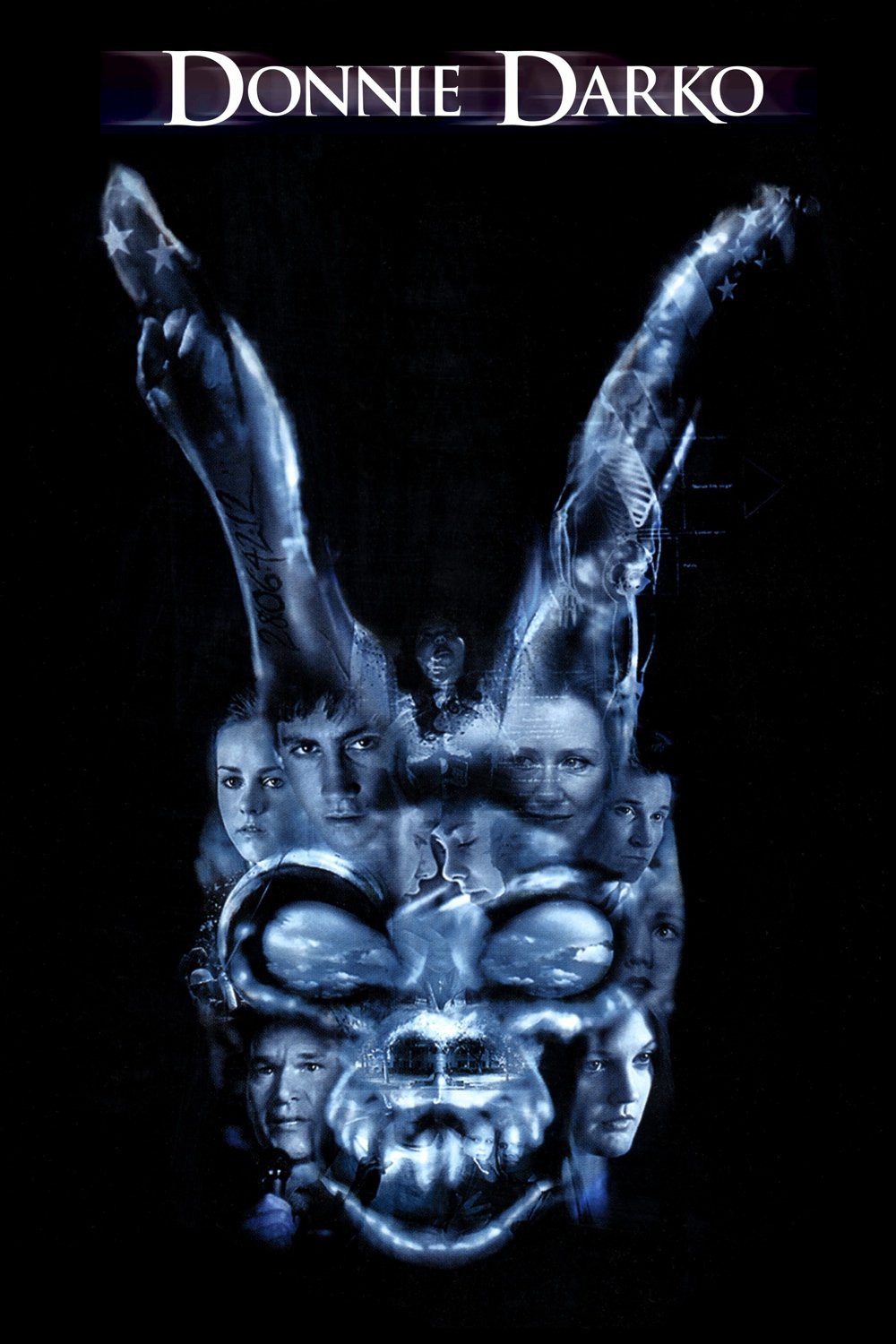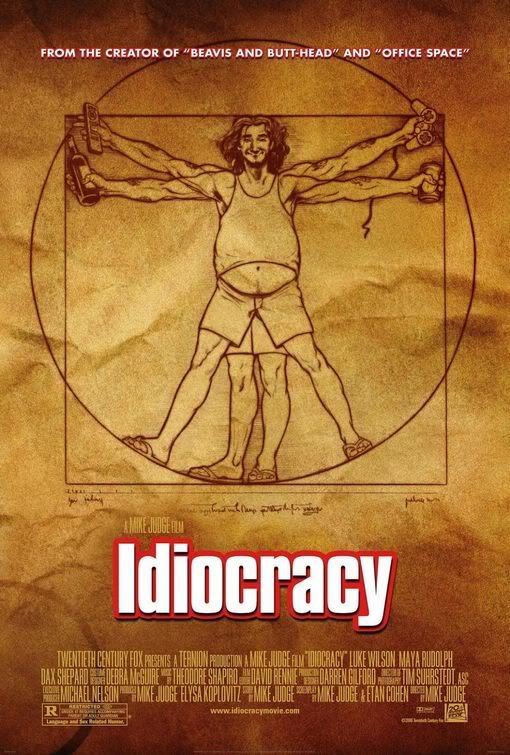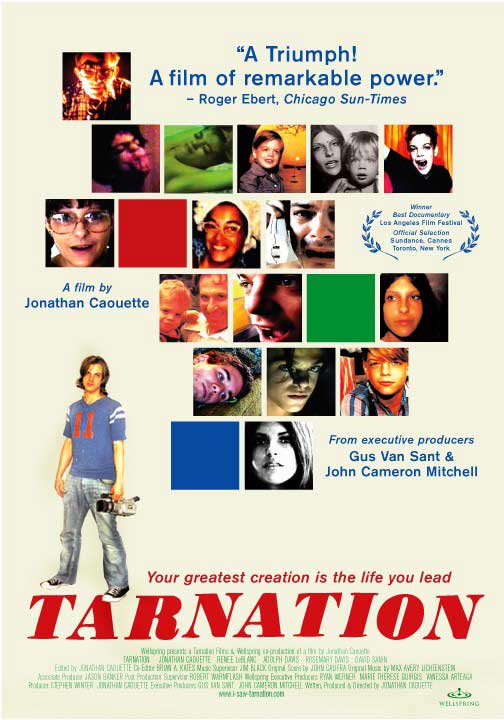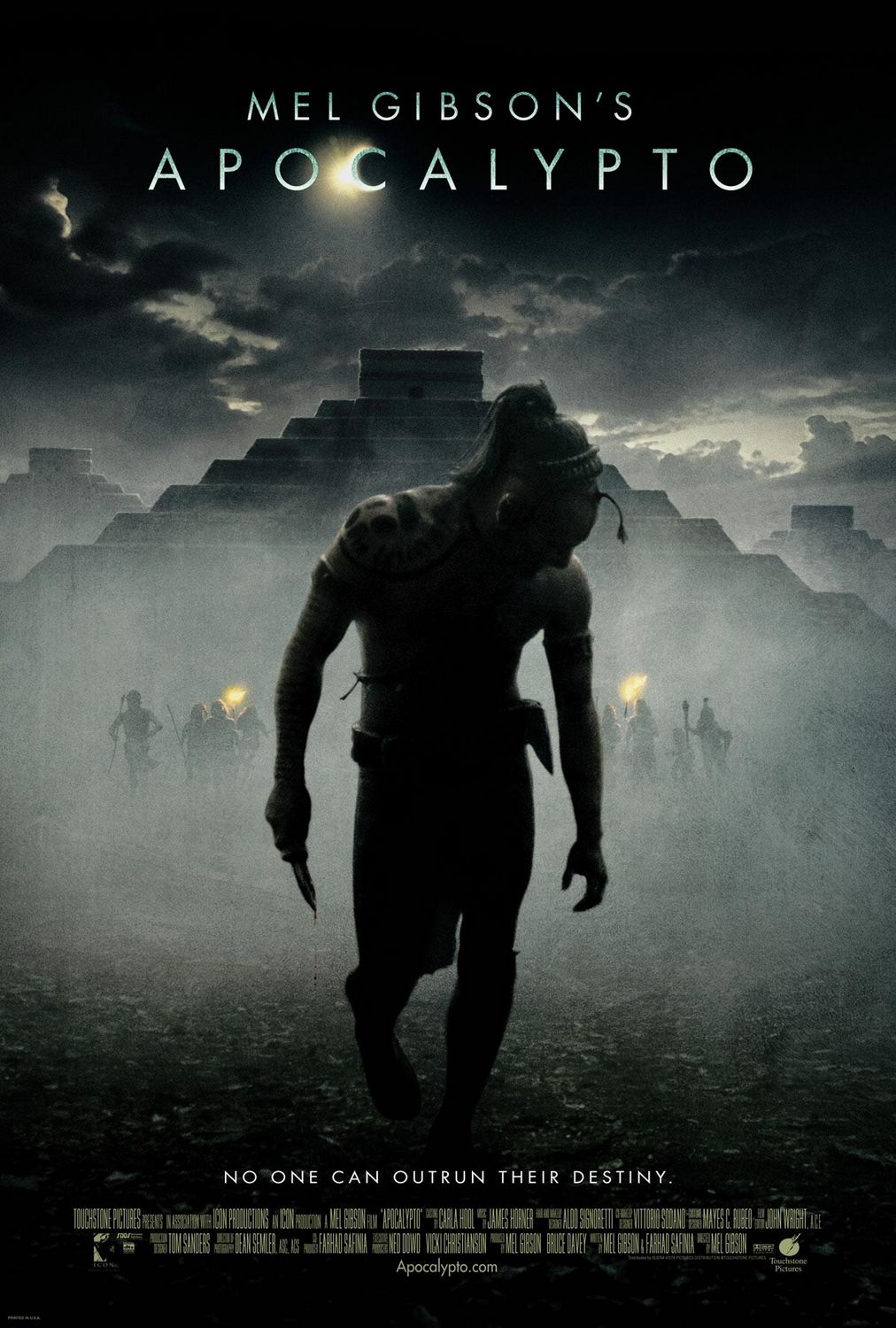
 BY DAN BUSKIRK FILM CRITIC My friends shake their heads a bit when I admit my geeky love for the format of the laserdisc. The laserdisc, with its 12” LP-sized discs, was in production between 1978 (Jaws was the first title) and the year 2000 (when Sleepy Hollow and Bringing Out the Dead being the format’s final releases), giving consumers their first chance to see movies at home digitally. The format has been discontinued for a decade now but its death coincides with the a major downturn in U.S. film that has gone unnoticed in all this “Best of the Decade” hoopla. New York Times film reviewer Manohla Dargis seemed to acknowledge this trend with frustration in a 2007 rave review for the little-seen Portuguese film Colossal Youth. “Ambiguity is rarely valued in movies anymore, at least for those in commercial release. The recent deaths of Ingmar Bergman and Michelangelo Antonioni have been, among other things, a painful reminder of how few genuinely novel, aesthetically and intellectually challenging films reach American movie houses. Our theaters are filled with junk, our heads too.”
BY DAN BUSKIRK FILM CRITIC My friends shake their heads a bit when I admit my geeky love for the format of the laserdisc. The laserdisc, with its 12” LP-sized discs, was in production between 1978 (Jaws was the first title) and the year 2000 (when Sleepy Hollow and Bringing Out the Dead being the format’s final releases), giving consumers their first chance to see movies at home digitally. The format has been discontinued for a decade now but its death coincides with the a major downturn in U.S. film that has gone unnoticed in all this “Best of the Decade” hoopla. New York Times film reviewer Manohla Dargis seemed to acknowledge this trend with frustration in a 2007 rave review for the little-seen Portuguese film Colossal Youth. “Ambiguity is rarely valued in movies anymore, at least for those in commercial release. The recent deaths of Ingmar Bergman and Michelangelo Antonioni have been, among other things, a painful reminder of how few genuinely novel, aesthetically and intellectually challenging films reach American movie houses. Our theaters are filled with junk, our heads too.”
Harsh? Sure, but the series of economic downturns that have afflicted our country throughout this decade, starting with the dot.com bust, have drained the money out of independent film, the one-time breeding ground for Hollywood innovation. Good films are still made in this country, although mostly from filmmakers who established their unconventional approaches in the decades earlier, but fewer truly challenging films get through the pipeline than ever before and I can’t think of a decade that has given birth to so few viable new U.S. directors. Even the moderately profitable films of an icon like Woody Allen have had to go to Europe to secure funding.
Something similar seems to have happened in the indie music scene as well, as if the decline of music education in schools and a business model that places all its values on hits and none on development has made innovation and original voices a rarity. I’ll except the possibility that it might be the waning enthusiasms of middle age but maybe it is just an artistically accurate picture of a country and its culture in decline: a nation whose rise was so excitingly documented through the culture of the 20th century is mapping its fall with equal precision. Here’s a dozen films films of U.S. origin (okay, and one from Canada) that have escaped the numbers-crunchers and stubbornly birthed themselves into the marketplace. Most were considered financial losers of some sort but each has, in some way, haunted me for months and years after being viewed. They might haunt you too.
– – – – – – –
Harmony Korine dropped off the scene for eight years after Gummo‘s unsatisfying Dogme follow-up, Julien Donkey-Boy. An unpredictable character, it  seemed like Korine’s filmmaking career could have been over until Mister Lonely emerged, his most controlled and ambitious film yet. Set among a group of celebrity impersonators living isolated on a Scottish island, Mister Lonely has a lot to say about our celebrity-obsessed culture and the stars we revere. It’s visually stunning and somehow Diego Luna convinces us that he is the shy and gentle spirit of Michael Jackson. British interviewer Martin Bashir brought us the real Michael Jackson in the perversely-absorbing Living With Michael Jackson, the rock documentary of the decade which made a nation’s collective jaws drop when it was first broadcast on ABC television in 2003. Like Welles’ Charles Foster Kane, here’s a man who conquered the world only to find himself trapped and alone in his fortress. Directed by Julie Shaw, the doc has never had a commercial release but deserves to be remembered as one of the most bizarre showbiz portraits ever captured.
seemed like Korine’s filmmaking career could have been over until Mister Lonely emerged, his most controlled and ambitious film yet. Set among a group of celebrity impersonators living isolated on a Scottish island, Mister Lonely has a lot to say about our celebrity-obsessed culture and the stars we revere. It’s visually stunning and somehow Diego Luna convinces us that he is the shy and gentle spirit of Michael Jackson. British interviewer Martin Bashir brought us the real Michael Jackson in the perversely-absorbing Living With Michael Jackson, the rock documentary of the decade which made a nation’s collective jaws drop when it was first broadcast on ABC television in 2003. Like Welles’ Charles Foster Kane, here’s a man who conquered the world only to find himself trapped and alone in his fortress. Directed by Julie Shaw, the doc has never had a commercial release but deserves to be remembered as one of the most bizarre showbiz portraits ever captured.
Donnie Darko famously bombed in its opening the weekend after the 9-11 attacks but its prescient, haunted tale of a high school kid who is either mentally ill or a prophet found its audience on DVD, where it was embraced by outcast teenagers everywhere. Richard Kelly’s direction was masterful, mixing its queasy eighties nostalgia with a dense coat of conspiratorial mystery that gave the appearance of the debut of a major talent. His films since, the formless Southland Tales and the contrite Darko-esque The Box proved otherwise. In fact, Kelly even loused up the ambiguity of the original film by releasing an inferior “Director’s Cut” that made the film’s meaning less-enticingly literal.
Mutual Appreciation is the most focused of Andrew Bujalski’s three features, each of his films chronicling the hesitant, uncommitted character of a trio of twenty-somethings who are bouncing around Brooklyn’s indie rock scene. Bujalski has been tagged as part of a movement called “Mumblecore” (a title promoted widely by IFC, which programs his films regularly) though his tightly-honed improvisational style is miles away from the Apatow-influenced youth comedies of the decade.
Barry Jenkins Medicine For Melancholy has been described with the shorthand “a black Before Sunrise” but Richard Linklater hardly holds the patent on talky youth films. We meet Micah (The Daily Show‘s Wyatt Cenac) and Jo (Tracey Heggins) the morning after the strangers fell into bed. The rest of the film is spent following them around San Francisco on a lazy Sunday while they both feel each other out as a potential boyfriend/girlfriend. Like A Killer of Sheep did in the ’70s, Medicine is important not just for it’s intelligence and style but because it points to a whole world that is almost completely absent in American film.
 Idiocracy is hardly a masterpiece of structure (few comedies are) but its basic premise is so audacious I’ve never stopped thinking about it. Directed by Office Space‘s Mike Judge, Idiocracy presents a future where the mass media’s infantilization has turned the country into dumbed-down Neanderthals. Filled with jokes based around name-brand putdowns of our corporatized society, Idiocracy was famously dumped by leery Fox executives and left to wash up unnoticed on home video.
Idiocracy is hardly a masterpiece of structure (few comedies are) but its basic premise is so audacious I’ve never stopped thinking about it. Directed by Office Space‘s Mike Judge, Idiocracy presents a future where the mass media’s infantilization has turned the country into dumbed-down Neanderthals. Filled with jokes based around name-brand putdowns of our corporatized society, Idiocracy was famously dumped by leery Fox executives and left to wash up unnoticed on home video.
Bad Biology was a stunning return from Frank Henenlotter, who had gone sixteen years without making a film. The NYC filmmaker specialized in extremely witty, over-the-top horror comedies like Basket Case and Frankenhooker, and he lost none of his powers to deliver shocked guffaws with this, his story of a woman with a teeth-laden vagina finding love with a man possessing a drug-addicted penis. Co-written with hip-hop performer R.A. Thorburn (aka R.A. the Rugged Man), Bad Biology brought down the house at its screening at the 2008 Philadelphia Film Fest but perhaps unsurprisingly (considering its subject matter), never found a distributor. It’s expected out on DVD at the end of this month through Media Blasters.
Canadian filmmaker Guy Madden continued with his string of fake antique movies, films whose outrageous plots come wrapped in the ancient film techniques of the twenties and thirties. His style has become a bit predictable as times goes on and Madden’s sense of humor has only become more obvious yet his freshest entry of the decade, Dracula: Pages From a Virgin’s Diary escaped the self-conscious amateurism by adapting a production of Dracula staged by the Winnipeg ballet. Finally, Madden could collaborate with performers who could do more than mug outlandishly and Wei-Qiang Zhang made one of the decade’s great vampires.
Like Woody Allen, Abel Ferrara was one of the quintessential New York directors and like Woody, Ferrara found he could no longer secure funding to shoot in his hometown. It’s hard to imagine Ferrara without New York City, so instead with Go Go Tales he went to Italy where the craftsmen at Cinecittà Studios constructed a beautiful evocation of the Manhattan street where Ray Ruby (Willem Dafoe) is the gentlemen host of a strip club whose landlord is threatening to evict him to move in a Bed Bath and Beyond. Go Go Tales is one of the best films on the transformation of Manhattan into a suburban playground, and Ferrara’s neon-lit fantasy club is a beautiful space to allow actors like Asia Argento, Bob Hoskins, Sylvia Miles and especially the lounge lizard Dafoe to dazzle us with their scene-stealing powers.
The one category in which U.S. filmmakers still excel is in documentaries and Jonathan Caouette’s very personal Tarnation stands out as the most  intimately audacious. A history of Caouette’s life with his mentally ill mother, Tarnation takes all the bits and pieces of his life — photos, video camera confessions and teenage audio recordings — and sorts through them in search of memories half lost in his own dealings with dementia. A intensely moving one-of-a-kind film.
intimately audacious. A history of Caouette’s life with his mentally ill mother, Tarnation takes all the bits and pieces of his life — photos, video camera confessions and teenage audio recordings — and sorts through them in search of memories half lost in his own dealings with dementia. A intensely moving one-of-a-kind film.
The personal documentary was taken to its epic heights in Ken Jacobs Star Spangled To Death, a fifty year in-the-making experimental treatise that seeks to tell the tale of the American century through found footage, newsreels and footage Jacobs shot of his two outcast friends and their attempts to get by in the American world of work and consumption. At over six hours, film professor Jacobs unloads a collection of weird moments he collected over a lifetime, and witnessing his critical argument against American normalcy makes you feel like you’ve tapped into his head to absorb a lifetime rare wisdom.
I guess the closest film to resemble Hollywood product on this list would be Mel Gibson’s follow-up to his phenomenally successful Passion of the Christ. Apocalypto was the kind of risky proposition filmmaker’s take on after scoring a big hit: would blockbuster audiences come to see a film with an all Native American cast and not a word of English? Not really; Apocalypto did moderate business despite being the most visceral and exciting action film of the decade. Its story of a young warrior captured and placed in slavery, who must escape to save his wife and children has the clarity of a classic silent movie while delivering a tale that could only be told through the mix of image, sound and movement that film can deliver. Who would’ve guessed the hunky star of the Lethal Weapon series could deliver such timeless drama? It’s the sort of surprise that keeps sending my back to the movies, hoping for accidental greatness to slip through the increasingly unimaginative business model that has been dampening American artistic imaginations for at least a decade.
PREVIOUSLY: The Best Films Of 2009
RELATED: Our Favorite Albums Of 2009
